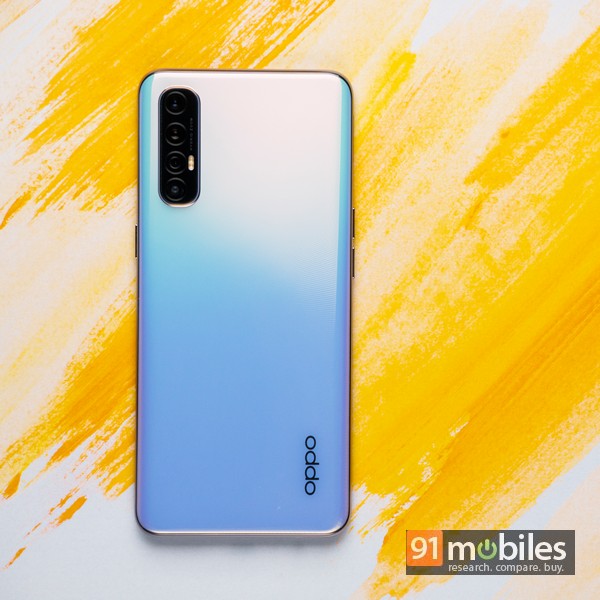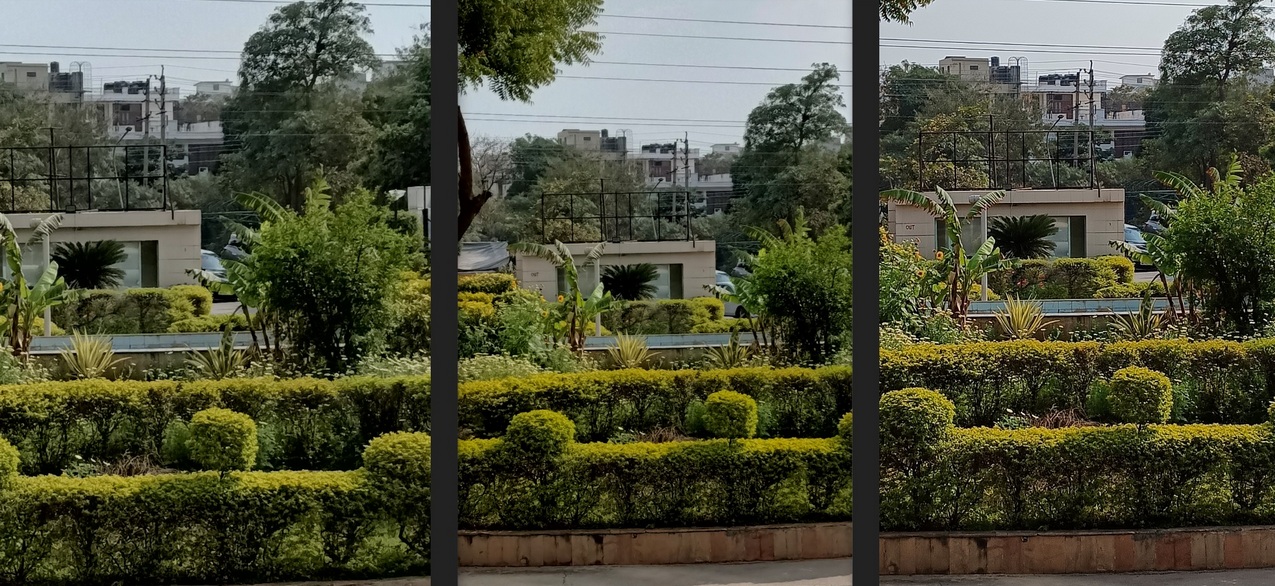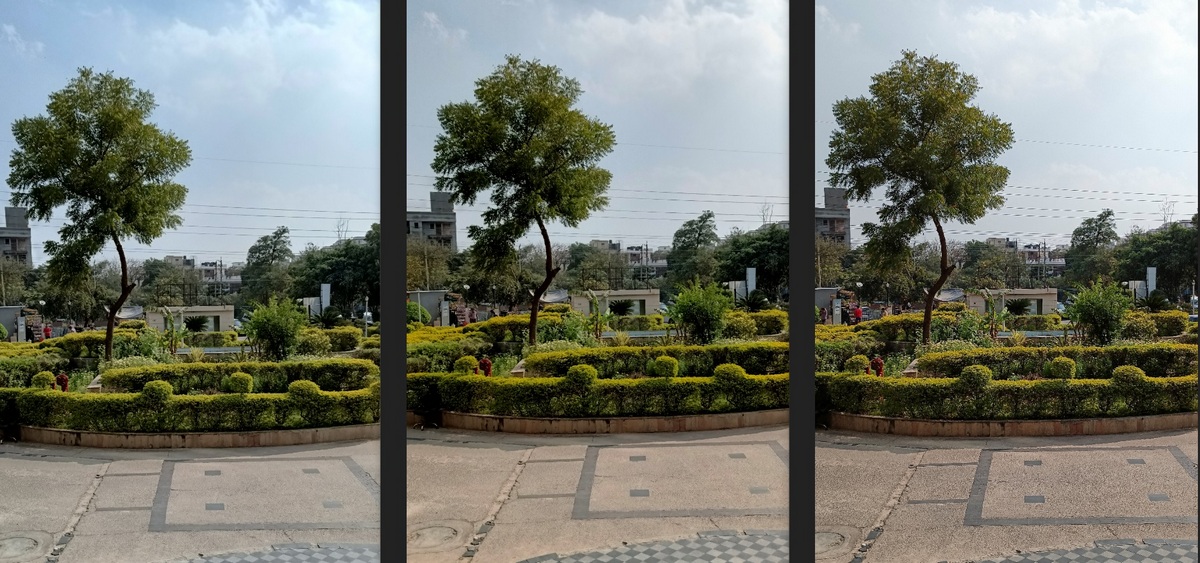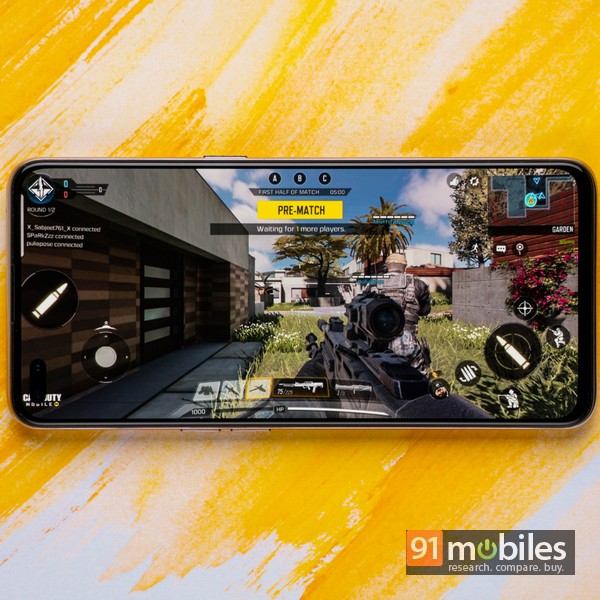These days when phones are launching faster than one can count, it is easy to be spoilt for choice. There was a time when Samsung was the de facto brand for smartphones across different price segments, but the scenario has changed drastically since the likes of Xiaomi, OPPO, Vivo, and more recently, Realme, joined the fray. Since the Chinese boom in the Indian market, there are now more than three to four brands competing in the same price segment, and the real challenge is deciding on one amongst them.

The OPPO Reno3 Pro is part of the Chinese smartphone giant’s Reno series, which has been characterised by its signature shark-fin pop-up camera. However, the Reno3 Pro discards any similarities it had with its predecessors and instead opts for a design more reminiscent…scratch that, exactly like the OPPO F series. More accurately, there appears to be very little discernible difference between the Reno3 Pro and the OPPO F15 (review). Priced at Rs 29,990, the competition for the Reno3 Pro is cutthroat, but the device is relying on a combination of cameras and computational photography to set itself apart. While 64MP quad-cameras are becoming a norm, what the Reno3 Pro does is something I’ve never seen on a mid-range phone. The company says it has used sub-pixel interpolation technology to convert a lower-resolution 64MP shot into a 108MP shot. After spending some time with the device, here’s what I make of it.

Verdict
Cameras aside, the OPPO Reno3 Pro takes a departure from the signature look of the Reno series, trading it for a simplistic feel quite reminiscent of the F series. It doesn’t, however, borrow the F series price tag. At a starting price of Rs 29,990, you do get a set of good cameras, a decent display, and a good UI, but you are sacrificing on the performance and a high refresh rate panel that the similarly priced Realme X2 Pro (review) offers.


- No application fee
- No down payment required
- No pre-closure fee
Design and display
As was quite apparent to me when I picked up the phone, the Reno3 Pro is not going to win any brownie points for its design language. Putting a Unicorn White OPPO F15 and the Sky White Reno3 Pro side-by-side, shows a near-identical rear panel with a slight difference in the positioning of the dual-LED flash. The fluorescent polycarbonate back has been a staple for quite a few OPPO phones over the past year. However, take nothing away from the in-hand feel of the device where OPPO has developed a knack for making devices look better than what it prices them at. In general, the Reno3 Pro is a light device and has polished edges making it much easier to hold than say, an iQOO 3 (review) which is both bulky and has jagged edges. The camera also does not sit flush with the phone’s body, unlike previous Reno devices, giving the phone a wobble when placed on a flat surface. There is no capacitive fingerprint sensor on the back as the Reno3 Pro goes for an in-display variety.

The OPPO Reno3 Pro has a Type-C port at the bottom along with a 3.5mm headphone jack and speaker. The button layout on the device is similar to other OPPO devices with the volume rocker on the left side while the power button, with a green accent, is present on the right. When you flip the Reno3 Pro to the front, you see a dual-punch hole on the top-left part of the screen. In the run of things, this is not something that is groundbreaking as some other smartphones have already incorporated this design language, but for OPPO, this is a first. I have always preferred these punch holes rather than any teardrop notches, or for that matter even a shark fin pop-out camera.

Talking about the display, the OPPO Reno3 Pro comes with a 6.4-inch Super AMOLED screen. A Samsung panel on a phone is quite the winning formula and it would seem that the Reno3 Pro is conforming to that pattern. There’s really nothing to critique on the display in terms of colour accuracy, crispness and brightness levels all of which were more than satisfactory. Legibility was never an issue under sunlight, now that the summer is upon us. Even so, OPPO is not really touting anything specific for its Reno3 Pro display. Perhaps the only thing missing here is that the phone does not have a higher refresh rate display and I have a feeling this is an issue that OPPO will be resolving soon on its mid-range/budget devices. The usual display optimisation features such as adjusting the colour temperatures, enabling dark mode, eye-care and a special low-brightness flicker-free eye care mode are present.
Cameras

108MP is the word that has been thrown around quite a lot with the OPPO Reno3 Pro. However, the phone does not have a lens that can click pictures in this resolution. Forget the camera, the Helio P95 chipset itself cannot support more than a 64MP camera, which is the resolution of the Reno3 Pro’s primary camera. So then why is OPPO saying that it can click 108MP photos? Here’s what the company has claimed:
“Through the main camera, Reno3 Pro can generate sub-pixel information with super-high image resolution and the multi-frame photos collected by the camera. With Optical-Flow Sub-pixel Registration, the camera can match and calibrate
the sub-pixels on different frames to generate a low-pixel original image, with more information. And then, through sub-pixel interpolation, the original image with low pixels becomes a picture with high-resolution.”
Obviously all of this makes little sense to the untrained mind. I’ll break it down for you. Basically OPPO is using sub-pixel interpolation to digital amplify the resolution of a 64MP shot to a 108MP shot. The camera is effectively estimating extra pixels in a photo and adding more details. In theory, this should make for a photo that is rich in detail and also exposed effectively. However, in reality…. this may not always be the case. The first hurdle is to enable a 108MP shot. For this, you’ll have to open the camera’s Expert mode and then you’ll have to turn on Extra HD mode at the top. I did measure the megapixel count of the photo taken and indeed it was 108MP. However, as a whole, there weren’t significantly more details than a normal 64MP photo.

In the photo above the left-most picture is the a 15X crop of the normal mode, the middle one is a 5X crop of the 64MP mode and photo on the right is a 5X crop in the 108MP mode. While it is remarkable how much extra detail the 108MP photo has, it does have a limited use case. For most people, the daily usage of this camera will quite likely be to take normal shots without having the need to crop so much into the photo. The same photo at 1X crop for all the modes shall demonstrate the point.

In general, though, the Reno 3 Pro will capture great, vivid and detailed shots, which has become quite standard for phones in the mid-range category. While photos will appear slightly saturated, I’m happy to see that focus and excessive smoothening were never a problem on the phone. Apart from the phone also packs in a 13MP telephoto lens which can accomplish 2X optical zoom and also 5X hybrid zoom. I was also happy to see that there was not a significant loss in detail even at 10X digital zoom. There is also an 8MP ultra-wide sensor that can encapsulate a 120-degree field of view but has a much softer focus than the primary lens. It doubles up as a macro lens that churns out varying results, but most of them are good.
Speaking of night-time photography, the Reno3 Pro is touting an Ultra-Dark mode, which is a feature that automatically turns on when the illumination is lower than 1lux. In general, I was satisfied with the results but OPPO’s merging of various exposure shots to produce a brighter low-light photo resulted in more noise than if I had taken a photo in just the normal mode.

On the front, a dual camera greets us with the main camera having a whopping 44MP resolution while the secondary lens is a 2MP depth sensor. I would’ve been quite impressed with the selfie shooter if OPPO had gotten rid of its face smoothening but no, even with every possible beauty filter off (and there are many), most of my facial details tend to vanish more often than not. Otherwise, background details and exposure get full marks. The added benefit of the depth sensor is that you get excellent portrait shots as well.
Performance and software
Nowadays mid-range phones are often equipped with specs that just two years back would’ve been exclusive to a flagship phone. OEMs like Realme and Xiaomi are pushing each other to the very limits of processing prowess while OPPO’s ridiculously-priced Reno2 (review) started at Rs 37,990 and offered mid-tier specs. The Reno3 Pro is no different, and don’t let the Pro moniker fool you. While it is true that the phone is the first to pack in a MediaTek P95 chipset, it would appear that over the previous-gen P90 chipset, the P95 only has about a 10 percent increase in GPU performance while the jump in CPU performance is not clearly mentioned. This is revealed implicitly in the benchmarks of the phone wherein the P95 has a score of 225165 which just higher than the OPPO F15’s P90 chipset which has a score of 195381.

Now to be fair, OPPO has not marketed the phone as a performance-oriented device so it is only natural that it does not sport the best of specs. Therefore users looking for gaming or more processor-intrinsic tasks may not really benefit from the device. Running PUBG Mobile on the phone locked it at medium settings along only the High frame rate option. On Call of Duty, the phone does not show the anti-aliasing and shadow adjustment options while the graphics are locked in at only high. The phone does pack in a respectable 8GB of RAM along with a maximum of 256GB internal storage. There is no expandable memory slot on the device. One thing that I appreciate on the phone is that it does not heat up even during long hours of gaming. Granted that processor-hungry settings are not supported on the phone but it is remarkable that after 1.5 hours of PUBG just raised the temperatures by 5 degrees.

As for authentication, the OPPO Reno3 Pro has an in-display fingerprint sensor that uses Fingerprint Unlock 3.0. I might add that while OPPO has claimed about 0.3 seconds to unlock the device, there have been a few instances where the phone does not unlock even after 3-4 attempts, although as a whole the unlocking speed is quite fast. The face unlock, however, is more reliable although that takes a hit when the lighting is dim. OPPO has marketed Dolby Atmos sound from its bottom-firing single speaker which did sound quite rich, clear and with a focus on bass, but it is easy to block with your hand when you are using the device in landscape mode. Apart from the quality of the earpiece and mic during calls were acceptable.

ColorOS 7.0, which is based on Android 10, runs on the OPPO Reno3 Pro and this happens to be the very first phone OPPO phone that supports it out of the box. As I had expected, ColorOS 7.0 brings in a certain fluidity in animations and multi-tasking that I’ve rarely seen on other Android skins. While on the design front there are not a lot of changes from ColorOS 6.0 there are new customisation options available such as the system-wide dark mode, a fresh set of wallpapers, intuitive and soothing ringtones, a three-finger screenshot functionality and more. It is quite similar to RealmeUI or more accurately, RealmeUI has taken a lot of inspiration from ColorOS 7.0.
Battery
The Reno3 Pro doesn’t pack in the biggest of batteries but it gets the job done nonetheless. A 4,025mAh battery is powering the device which is quite likely going to last you the whole day provided you do not spend a lot of time gaming on the phone. Apart from that inside the box, there is also a 30W charger that can juice up the phone in 55 minutes. Our regular battery test showed that the phone lasts about 19 hours when playing video on a loop continuously on half brightness.

Final Verdict
I think that the OPPO Reno3 Pro would’ve been a wonderful phone if it had been priced below Rs 25,000. Its ultimate USP are its cameras and while they are quite good, I do have some reservations. Namely, how often will you use a 108MP shot to take photos? Most people who will purchase this smartphone will take the standard point and shoot photos wherein only a 16MP photo is generated. A 44MP selfie camera is great if you want to hand a massive framed selfie on your wall but obviously most people are just not going to do that.

The capable MediaTek P95 falls flat against even the Redmi Note 8 Pro (review) and its MediaTek G90T SoC. There’s no high refresh rate on the phone like the significantly cheaper POCO X2 (review). The battery is not the biggest and its charging speed is comparable to the Realme X2 (review), which is again quite a bit cheaper than the OPPO Reno3 Pro. The Shark fin design was what set the Reno series apart from the rest but I feel that with the Reno3 Pro, the company has devoid the phone of this signature touch. Overall, it seems there are better wholesome packages out there.
Editor’s rating: 3.5 / 5
Pros:
- Good, vibrant display
- 108MP photos have a lot of detail
- Excellent software
Cons:
- No high refresh rate screen
- Performance is not up to the mark
- Pricing is an issue
 | Rs. 24,999.00 | Go To Store |





























